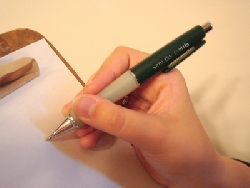
I recently received an e-mail publicizing a “webinar” on how to keep minutes for a meeting. At first I thought it was a joke as I consider such a task to be rather simple and obvious. Then again, although I had written numerous minutes over the years for a variety of organizations, it occurred to me there are a lot of people who haven’t. The obvious is not always obvious, and perhaps the producers of the webinar were on to something.
As I am a writer and have done this type of work for many years, let me give you my spin on how to keep minutes. First, do not trivialize the keeping of minutes. It is an official recording of the actions and decisions of an organization and, as such, has legal ramifications. Consequently, I recommend you become more intimate with how meetings should be conducted. To this end, you may want to obtain a copy of “Robert’s Rules of Order” and keep it nearby for reference purposes. I also recommend attending a course in Parliamentary Procedure. Regardless of the advice derived from these sources, you must also be cognizant that not all organizations observe such protocol and, as such, you should become intimate with the governing documents of your organization, such as its bylaws. There may also be some specific rules and regulations in your state for how minutes are to be recorded and maintained. Aside from this, just like about any other document, there are three basic parts to recording minutes: a beginning, a middle, and an end.
The beginning specifies the 5-W’s:
WHAT – defining the proper name of the organizational body. If it is a committee, subcommittee, or subsidiary of another body, be sure to denote the superior entities.
WHERE – specifying exactly where the meeting occurred, including street address, city, state, zip code, name of building and room number (if applicable). I also happen to include the telephone number, e-mail address, and web address if I happen to know it.
WHEN – the date the meeting occurred including the starting and ending times, and any breaks during the meeting.
WHO – the officer(s) running the meeting, along with their titles. Some organizations require keeping track of all attendees. For this, you might need to perform a roll call or require a sign-in sheet, either of which should be attached to the minutes.
WHY – defines the purpose of the meeting, e.g., board of directors meeting, general meeting, committee meeting, etc.
The middle section represents the chronology of events during the meeting. Hopefully, the person chairing the meeting will maintain control and not allow it to become a free-for-all which complicates recording minutes. It is also hoped the chairman is operating with an agenda which provides structure for the meeting. The agenda should include sections such as: Opening, Committee Reports, Awards, Correspondence, Old Business, New Business, Closing, etc. This provides a convenient road map for the person keeping the minutes and represents the various sections of the document. However, if there is no agenda and the meeting runs out of control, you’re on your own.
Throughout the meeting, there will be people making motions, some important, others rather trivial. Regardless, you must record all motions. When doing so, make sure they are as clearly worded as possible to avoid confusion later on. It is common to identify the person making the motion in order to assure the person is a legitimate member of the organization and is entitled to make such a motion. The person making the “second” is less important other than to be identified as a legitimate member of the body. Identifying the person, therefore, is considered optional. Depending on the nature of the motion, you can either indicate the motion passed or failed (or possibly “tabled” until another time), or list the number of votes for and against (and abstained).
Discussion on motions can become rather lengthy and heated. As such, it is advised you avoid including a description of the discourse unless specifically instructed by the chairman to take note of something. Always remember, you are a recording secretary, not a stenographer. More importantly, concentrate on the outcome of the debate in terms of what was resolved.
During the course of a meeting, a report or paper may be introduced that has a direct bearing on the organization itself or a particular motion, such as a committee report, treasurer’s report, an important letter, etc. In addition to making a motion to accept such a document, a motion should also be made to attach it to the minutes and become a part thereof.
If money is collected during the meeting for a specific purpose, be sure to personally count the money, record the amount and denote the purpose for receiving it. For example, if someone makes a donation to a specific charitable cause, state the name of the person, the amount donated, and the charity to receive it.
The ending is rather easy as it denotes the name, title, and signature of the person recording the minutes. It is also a good idea to have the minutes countersigned for validity by the senior officer present, such as the president or chairman.
Remain objective in writing minutes, do not editorialize. Avoid the temptation to say something was “good” or “bad.” For example, “Sam Smith gave an excellent lecture on…” Instead, write something like, “Sam Smith gave a lecture on… The Chairman thanked him for the presentation.” In other words, stick to the facts and do not embellish.
Recording minutes is a relatively simple matter to perform, it just requires a good agenda and someone who can competently write. Working with the senior officers of an organization, I help prepare the agenda in advance of the meeting. Consequently, I am able to assemble a set of the minutes in advance and make minor adjustments to them during the course of the meeting. In other words, I establish a template and fill in the blanks.
After the minutes have been recorded and approved, they should be filed in chronological sequence, normally in a binder or folder. Some organizations require minutes to be permanently glued and bound in hard cover books. Again, consult your governing documents for specifics. However if they are to be physically stored or archived, take precautions for their safeguard, such as from fire, water damage or acts of God.
My only other recommendation for recording minutes is, if it looks like the chairman or senior officers haven’t got a clue as to how to run a meeting, and many do not, have somebody else write them.
Maybe there is a market for training people in how to record minutes. “Who’da thunk it.”
Keep the Faith!
Note: All trademarks both marked and unmarked belong to their respective companies.

Tim Bryce is a writer and the Managing Director of M. Bryce & Associates (MBA) of Palm Harbor, Florida and has over 30 years of experience in the management consulting field. He can be reached at timb001@phmainstreet.com
For Tim’s columns, see:
http://www.phmainstreet.com/timbryce.htm
Like the article? TELL A FRIEND.
Tune into Tim’s THE BRYCE IS RIGHT! podcast Mondays-Fridays, 7:30am (Eastern).
Copyright © 2011 by Tim Bryce. All rights reserved.
